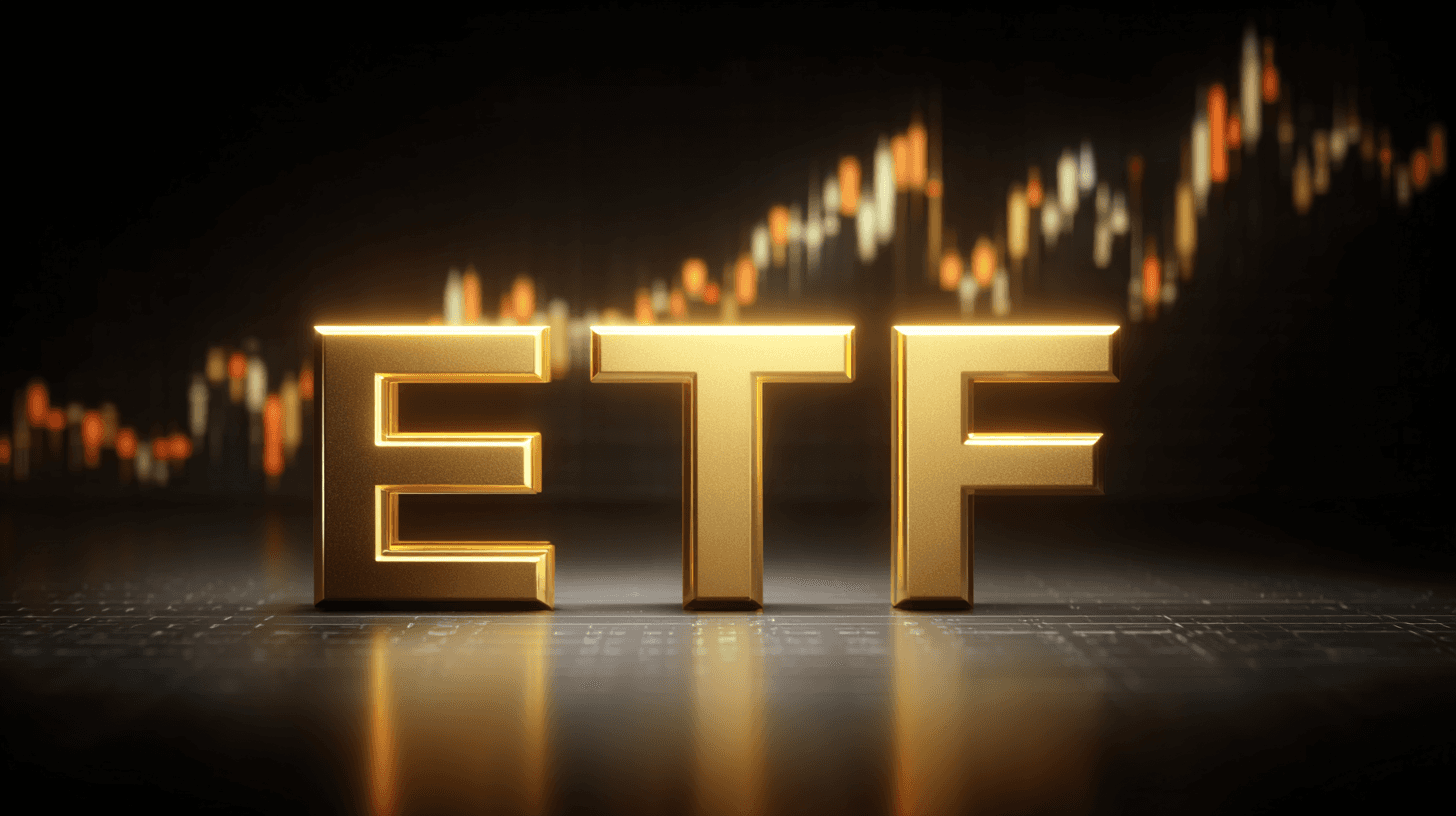
Kodex
Becoming the Path Worth Taking
― The Story Behind the Samsung Kodex’s Integrated Branding
Prologue
From Words to Steps
For the longest time, "investing" was the exclusive domain of experts. It seemed like a specialized language belonging only to those who wore suits, read charts, and navigated numbers and statistics with ease. But things have changed. Now everyone buys stocks, picks funds, and occasionally glances at ETFs. We live in an era where you can allocate and withdraw assets with just a few taps on a mobile app.
Yet ETFs still feel somewhat unfamiliar. They're diversified like funds but trade like stocks, delicately balancing between stability and liquidity. Their structure is complex but their explanation is simple; they seem easy to access but are difficult to explain.
Perhaps that's why when it comes to ETFs, brands aren't just name tags representing asset management companies. They take on the role of simplifying complex structures and making unfamiliar concepts flow naturally. Brands quietly whisper, "It's okay to start here."
Kodex was the first brand to stake its name in this market. Since 2002, when even the term "ETF" was unfamiliar, it has grown alongside the market and consistently held the top position. But longtime leaders always face the same question: "Are you still relevant?"
New investors always listen more closely to brands that speak differently. They seek today's language over familiar trust, choosing fresh messages over explanations that have always been there. The ETF market is being reshaped by this movement right now. That's why we returned to the original question Kodex first posed: "How do we help people understand ETFs, and how do we get them started?" This integrated branding is a journey to find that answer.
About a brand that briefly set down the weight of 20 years and picked up the word "possibility" again—its new "words." And the carefully crafted process by which those gently offered words become "steps" of challenge and creation, designed to move forward together with those taking their first steps into this unfamiliar world.
For the longest time, "investing" was the exclusive domain of experts. It seemed like a specialized language belonging only to those who wore suits, read charts, and navigated numbers and statistics with ease. But things have changed. Now everyone buys stocks, picks funds, and occasionally glances at ETFs. We live in an era where you can allocate and withdraw assets with just a few taps on a mobile app.
Yet ETFs still feel somewhat unfamiliar. They're diversified like funds but trade like stocks, delicately balancing between stability and liquidity. Their structure is complex but their explanation is simple; they seem easy to access but are difficult to explain.
Perhaps that's why when it comes to ETFs, brands aren't just name tags representing asset management companies. They take on the role of simplifying complex structures and making unfamiliar concepts flow naturally. Brands quietly whisper, "It's okay to start here."
Kodex was the first brand to stake its name in this market. Since 2002, when even the term "ETF" was unfamiliar, it has grown alongside the market and consistently held the top position. But longtime leaders always face the same question: "Are you still relevant?"
New investors always listen more closely to brands that speak differently. They seek today's language over familiar trust, choosing fresh messages over explanations that have always been there. The ETF market is being reshaped by this movement right now. That's why we returned to the original question Kodex first posed: "How do we help people understand ETFs, and how do we get them started?" This integrated branding is a journey to find that answer.
About a brand that briefly set down the weight of 20 years and picked up the word "possibility" again—its new "words." And the carefully crafted process by which those gently offered words become "steps" of challenge and creation, designed to move forward together with those taking their first steps into this unfamiliar world.
Chapter 1
ETFs Are Still Unfamiliar



There's a phrase that often appears when explaining ETFs: "easy, fast, and diversified investing." But that sentence is strangely simple. So simple that it actually skips over lengthy explanations. In reality, ETFs aren't that straightforward. They're managed like funds but trade like stocks, follow indices but sometimes chase themes. There are countless varieties with different return directions. Someone encountering them for the first time might hesitate at the most basic question: "Is this a fund or a stock?"
There's a phrase that often appears when explaining ETFs: "easy, fast, and diversified investing." But that sentence is strangely simple. So simple that it actually skips over lengthy explanations. In reality, ETFs aren't that straightforward. They're managed like funds but trade like stocks, follow indices but sometimes chase themes. There are countless varieties with different return directions. Someone encountering them for the first time might hesitate at the most basic question: "Is this a fund or a stock?"
Due to their structure, ETFs appear to be "products open to everyone," but they're actually complex investment tools requiring some background knowledge and contextual understanding. That's why brands aren't chosen simply for having good names. Brands must serve as gateways of understanding, reducing complexity and turning vagueness into something concrete.
Kodex was at the starting point of this market. Since 2002, when even the word "ETF" was unfamiliar, it has consistently launched various products and led Korea's ETF market. Over the years, it built an image of "stability," "proven management," and "the ETF chosen by experts." Investors began trusting the ETF investment method itself through Kodex, naturally establishing it as the market's representative brand.
But the market has changed. Not just in terms of more investment products becoming available. The investors themselves are different. Younger, faster, more direct individual investors have emerged, and they have the attitude of wanting to compare and choose for themselves rather than waiting for someone to explain things to them. Brands now need to proactively say, "Why do you need this product?" and "What perspective does this brand have?"
One brand read this trend faster than anyone: Mirae Asset's TIGER ETF. TIGER began actively revealing its unique investment perspective and sensibility through various channels like YouTube, SNS, and Brunch. It consistently built content about thematic ETFs and actively incorporated keywords and trends that this era aspires to in product names and advertising copy.
New investors choose based on emotional threads—not so much "What exactly is an ETF?" but rather what expectations this ETF creates, how it connects with current trends, and whether they can ride that wave too. This emotional connection naturally leads to "confidence in returns."
In other words, TIGER has sensibly unpacked ETFs' structural flexibility and scalability while naturally building the impression that "ETFs are difficult, but this brand's ETFs work well." As a result of designing every aspect of brand expression to feel like product performance, it has established itself as a brand that makes people envision real investment expectations within the unfamiliar structure of ETFs.
In contrast, Kodex had long relied on the inertia of being market leader. While its product lineup was sufficiently diverse, the way it communicated that diversity was somewhat formal and slow. It had the virtue of prudence, but this sometimes led to the impression of being "a brand that feels distant." This isn't simply a marketing problem. While ETFs themselves remain promising products, who delivers that promise most convincingly was shifting the market's center of gravity.
At this point, Kodex poses the question again: "How are today's investors accepting the complex structure of ETFs?" and "What do they really want to hear from this brand right now?" To answer these questions, Kodex didn't just settle for naming products. The brand positions itself as a designer and coordinator that approaches investors' points of hesitation first, clearly highlighting the context of choice even within complex structures, and sometimes takes on the role of an active interpreter leading market trends.
Due to their structure, ETFs appear to be "products open to everyone," but they're actually complex investment tools requiring some background knowledge and contextual understanding. That's why brands aren't chosen simply for having good names. Brands must serve as gateways of understanding, reducing complexity and turning vagueness into something concrete.
Kodex was at the starting point of this market. Since 2002, when even the word "ETF" was unfamiliar, it has consistently launched various products and led Korea's ETF market. Over the years, it built an image of "stability," "proven management," and "the ETF chosen by experts." Investors began trusting the ETF investment method itself through Kodex, naturally establishing it as the market's representative brand.
But the market has changed. Not just in terms of more investment products becoming available. The investors themselves are different. Younger, faster, more direct individual investors have emerged, and they have the attitude of wanting to compare and choose for themselves rather than waiting for someone to explain things to them. Brands now need to proactively say, "Why do you need this product?" and "What perspective does this brand have?"
One brand read this trend faster than anyone: Mirae Asset's TIGER ETF. TIGER began actively revealing its unique investment perspective and sensibility through various channels like YouTube, SNS, and Brunch. It consistently built content about thematic ETFs and actively incorporated keywords and trends that this era aspires to in product names and advertising copy.
New investors choose based on emotional threads—not so much "What exactly is an ETF?" but rather what expectations this ETF creates, how it connects with current trends, and whether they can ride that wave too. This emotional connection naturally leads to "confidence in returns."
In other words, TIGER has sensibly unpacked ETFs' structural flexibility and scalability while naturally building the impression that "ETFs are difficult, but this brand's ETFs work well." As a result of designing every aspect of brand expression to feel like product performance, it has established itself as a brand that makes people envision real investment expectations within the unfamiliar structure of ETFs.
In contrast, Kodex had long relied on the inertia of being market leader. While its product lineup was sufficiently diverse, the way it communicated that diversity was somewhat formal and slow. It had the virtue of prudence, but this sometimes led to the impression of being "a brand that feels distant." This isn't simply a marketing problem. While ETFs themselves remain promising products, who delivers that promise most convincingly was shifting the market's center of gravity.
At this point, Kodex poses the question again: "How are today's investors accepting the complex structure of ETFs?" and "What do they really want to hear from this brand right now?" To answer these questions, Kodex didn't just settle for naming products. The brand positions itself as a designer and coordinator that approaches investors' points of hesitation first, clearly highlighting the context of choice even within complex structures, and sometimes takes on the role of an active interpreter leading market trends.
Chapter 2
From Red to Blue, From Rising to Direction



When starting a brand renewal, there's one question you face first: "What should we change first?" It could be the logo, the colors, or the tone of voice. Since all brand elements are interconnected, wherever you start touching, everything changes in a chain reaction.
Faced with this question, Kodex decided to change 'color' first. More precisely, they first organized the reasons why color needed to change first.
The existing Kodex logo was a red wordmark. Red—the color symbolizing bull markets, suggesting profits, and commonly considered powerful in financial communication. But preliminary research conducted before this renewal showed that people didn't perceive that color that way.
"Conservative," "rigid," "outdated." Responses like "friendly" or "flexible" were notably few.
The decisive factor was that when asked "What color suits Kodex?" people most frequently chose blue, not red. The reason was simple: Samsung.
A brand created by Samsung, a product launched by Samsung Asset Management, a corporate image that countless people already comfortably accept. There was already a visual grammar that society had established, even without the brand saying anything. Kodex decided not to go against that common sense.
So 'blue' wasn't just a color—it was the language of trust. The most effective way for the brand to reintroduce itself was to visually demonstrate the belief that "we are Samsung." Thus the brand moved from red to blue, simultaneously refreshing its first greeting to the market.
Next was form. They needed a structure that was simple, familiar, and could immediately evoke meaning. It couldn't be too intricate, nor too explanatory. The motifs chosen were a hot air balloon and a map pointer.
When starting a brand renewal, there's one question you face first: "What should we change first?" It could be the logo, the colors, or the tone of voice. Since all brand elements are interconnected, wherever you start touching, everything changes in a chain reaction.
Faced with this question, Kodex decided to change 'color' first. More precisely, they first organized the reasons why color needed to change first.
The existing Kodex logo was a red wordmark. Red—the color symbolizing bull markets, suggesting profits, and commonly considered powerful in financial communication. But preliminary research conducted before this renewal showed that people didn't perceive that color that way.
"Conservative," "rigid," "outdated." Responses like "friendly" or "flexible" were notably few.
The decisive factor was that when asked "What color suits Kodex?" people most frequently chose blue, not red. The reason was simple: Samsung.
A brand created by Samsung, a product launched by Samsung Asset Management, a corporate image that countless people already comfortably accept. There was already a visual grammar that society had established, even without the brand saying anything. Kodex decided not to go against that common sense.
So 'blue' wasn't just a color—it was the language of trust. The most effective way for the brand to reintroduce itself was to visually demonstrate the belief that "we are Samsung." Thus the brand moved from red to blue, simultaneously refreshing its first greeting to the market.
Next was form. They needed a structure that was simple, familiar, and could immediately evoke meaning. It couldn't be too intricate, nor too explanatory. The motifs chosen were a hot air balloon and a map pointer.



The hot air balloon contains upward movement. It resembles traditional investment imagery of rising markets while simultaneously symbolizing leisurely, gentle direction. While ETF structures are fast and complex, the world this brand wants to show is somewhat warmer and more relaxed. It gives the impression of telling investment beginners, "It's okay to rise slowly."
The map pointer symbolizes destination. Marking a location, clearly setting the direction you want to go. It's also a perspective that views ETFs from the standpoint of journey and goals rather than returns.
The symbol combining these two elements ultimately comes together as one proposition: ETFs are difficult, but starting through this brand makes that journey somewhat clearer. When the journey becomes clear, you don't need to obsess over speed. If you can see the direction, you can also adjust the rhythm of movement.
Kodex didn't completely re-explain ETFs as products. Instead, it showed what kind of experience becomes possible through those products. That was the role of the new symbol and the core of the newly designed brand language.
And all these changes went beyond simply "making things look good"—they were also a response to how brands should exist in the ETF market. The era of good products is over. The era of good explanations is also ending. What's needed now is how to make people remember those products—that's the crucial part. Kodex began reconstructing that first scene through color and form, image and impression.
The hot air balloon contains upward movement. It resembles traditional investment imagery of rising markets while simultaneously symbolizing leisurely, gentle direction. While ETF structures are fast and complex, the world this brand wants to show is somewhat warmer and more relaxed. It gives the impression of telling investment beginners, "It's okay to rise slowly."
The map pointer symbolizes destination. Marking a location, clearly setting the direction you want to go. It's also a perspective that views ETFs from the standpoint of journey and goals rather than returns.
The symbol combining these two elements ultimately comes together as one proposition: ETFs are difficult, but starting through this brand makes that journey somewhat clearer. When the journey becomes clear, you don't need to obsess over speed. If you can see the direction, you can also adjust the rhythm of movement.
Kodex didn't completely re-explain ETFs as products. Instead, it showed what kind of experience becomes possible through those products. That was the role of the new symbol and the core of the newly designed brand language.
And all these changes went beyond simply "making things look good"—they were also a response to how brands should exist in the ETF market. The era of good products is over. The era of good explanations is also ending. What's needed now is how to make people remember those products—that's the crucial part. Kodex began reconstructing that first scene through color and form, image and impression.
Chapter 3
“Becoming the Path Worth Taking”



Once the brand has taken on a new color and established a new symbol, it's time to communicate that refined impression to the outside world. Words must be outward-facing. No brand exists just to talk to itself. At some point, brands must acquire public language and stand before someone's choice.
Once the brand has taken on a new color and established a new symbol, it's time to communicate that refined impression to the outside world. Words must be outward-facing. No brand exists just to talk to itself. At some point, brands must acquire public language and stand before someone's choice.
For that moment, Kodex created one sentence:
“Becoming the path worth taking.”
This sentence is a slogan, a direction, and above all, an attitude. It was an utterance that temporarily paused ETFs—complex products in a profit-centered competitive structure—and reconstructed them with the sensibility of a 'path.'
If investing is a tool for profit, what people using that tool might need most is a path they can confidently walk. Many investors show interest in ETFs but often postpone choices due to too many product options or give up entry due to not understanding the structure. At this point, Kodex decided not to 'explain' ETFs. Instead, they chose to suggest what directions become possible through ETF products.
This slogan didn't end with just one sentence. In the brand film, it takes more concrete form: a runway.
Scenes of investors moving forward like models on stage, walking out like protagonists of a new era, showing speed and decision instead of hesitation. Through this, Kodex delivers one message: "The investors of this era are you. This brand will become the foundation beneath those steps."
While existing asset management brands mainly listed numbers and product advantages, Kodex changed its attitude by placing people at the center. Movement instead of numbers, direction instead of structure, scenes instead of explanation. This wasn't just sensory packaging—it was a signal showing from what eye level the brand began viewing new customers.
ETFs are difficult. They still require much information, carry various risks, and choices come with responsibility. But before all those explanations, what brands can show first is helping people imagine 'a path it's okay to walk confidently.'
Kodex wanted to become the backdrop helping that imagination. It began saying, "Let's walk together through the experiences and directions possible within ETFs," rather than just the name "ETF." That sentence ultimately returns to one proposition: "This might be your first ETF choice. If so, shouldn't that path be one you want to walk?"
For that moment, Kodex created one sentence:
“Becoming the path worth taking.”
This sentence is a slogan, a direction, and above all, an attitude. It was an utterance that temporarily paused ETFs—complex products in a profit-centered competitive structure—and reconstructed them with the sensibility of a 'path.'
If investing is a tool for profit, what people using that tool might need most is a path they can confidently walk. Many investors show interest in ETFs but often postpone choices due to too many product options or give up entry due to not understanding the structure. At this point, Kodex decided not to 'explain' ETFs. Instead, they chose to suggest what directions become possible through ETF products.
This slogan didn't end with just one sentence. In the brand film, it takes more concrete form: a runway.
Scenes of investors moving forward like models on stage, walking out like protagonists of a new era, showing speed and decision instead of hesitation. Through this, Kodex delivers one message: "The investors of this era are you. This brand will become the foundation beneath those steps."
While existing asset management brands mainly listed numbers and product advantages, Kodex changed its attitude by placing people at the center. Movement instead of numbers, direction instead of structure, scenes instead of explanation. This wasn't just sensory packaging—it was a signal showing from what eye level the brand began viewing new customers.
ETFs are difficult. They still require much information, carry various risks, and choices come with responsibility. But before all those explanations, what brands can show first is helping people imagine 'a path it's okay to walk confidently.'
Kodex wanted to become the backdrop helping that imagination. It began saying, "Let's walk together through the experiences and directions possible within ETFs," rather than just the name "ETF." That sentence ultimately returns to one proposition: "This might be your first ETF choice. If so, shouldn't that path be one you want to walk?"






Epilogue
Paths Are Always Completed by Someone's Steps
Brands can't explain everything. But when someone tries to move forward, brands can take on the role of carefully smoothing the ground where those steps will land.
Kodex's renewal wasn't just repainting an old image. It was designing an attitude that could tell those encountering ETF structures for the first time, those just starting to invest, "It's okay to start this way."
We sought that possibility within the metaphor of 'path.' Investment always speaks in the language of returns and structures, comparisons and choices, but what was needed before all that language was the 'sensation of wanting to walk.' Before complex explanations, that path needed to feel familiar.
So this change began from 'feeling' rather than numbers or functions. Color became a way of speaking the brand's trust, and symbols were refined into scenes that evoke journeys rather than simple shapes. The brand film became not a tool for delivering messages, but a stage for imagining experiences that will become possible.
All these changes were also about changing the brand's tone of voice. Instead of emphasizing "why this product is good," it was a tone that made people feel "it's okay with this brand." At the center was the belief that brands should no longer be entities explaining from the front, but entities walking alongside.
Kodex no longer speaks only of being number one. Instead, it seeks to become the most trustworthy brand beside those walking this path for the first time.
So we want to rephrase this slogan like this: "Your steps create that path."
This renewal was time spent refining the language of the ETF market and designing the sensations and directions that language could reach. That direction wasn't something the brand decided, but space prepared so that those taking steps could choose at their own pace.
Paths weren't predetermined from the beginning. Someone's steps opened those possibilities. Kodex now seeks to become the first path built upon those possibilities.
Brands can't explain everything. But when someone tries to move forward, brands can take on the role of carefully smoothing the ground where those steps will land.
Kodex's renewal wasn't just repainting an old image. It was designing an attitude that could tell those encountering ETF structures for the first time, those just starting to invest, "It's okay to start this way."
We sought that possibility within the metaphor of 'path.' Investment always speaks in the language of returns and structures, comparisons and choices, but what was needed before all that language was the 'sensation of wanting to walk.' Before complex explanations, that path needed to feel familiar.
So this change began from 'feeling' rather than numbers or functions. Color became a way of speaking the brand's trust, and symbols were refined into scenes that evoke journeys rather than simple shapes. The brand film became not a tool for delivering messages, but a stage for imagining experiences that will become possible.
All these changes were also about changing the brand's tone of voice. Instead of emphasizing "why this product is good," it was a tone that made people feel "it's okay with this brand." At the center was the belief that brands should no longer be entities explaining from the front, but entities walking alongside.
Kodex no longer speaks only of being number one. Instead, it seeks to become the most trustworthy brand beside those walking this path for the first time.
So we want to rephrase this slogan like this: "Your steps create that path."
This renewal was time spent refining the language of the ETF market and designing the sensations and directions that language could reach. That direction wasn't something the brand decided, but space prepared so that those taking steps could choose at their own pace.
Paths weren't predetermined from the beginning. Someone's steps opened those possibilities. Kodex now seeks to become the first path built upon those possibilities.
